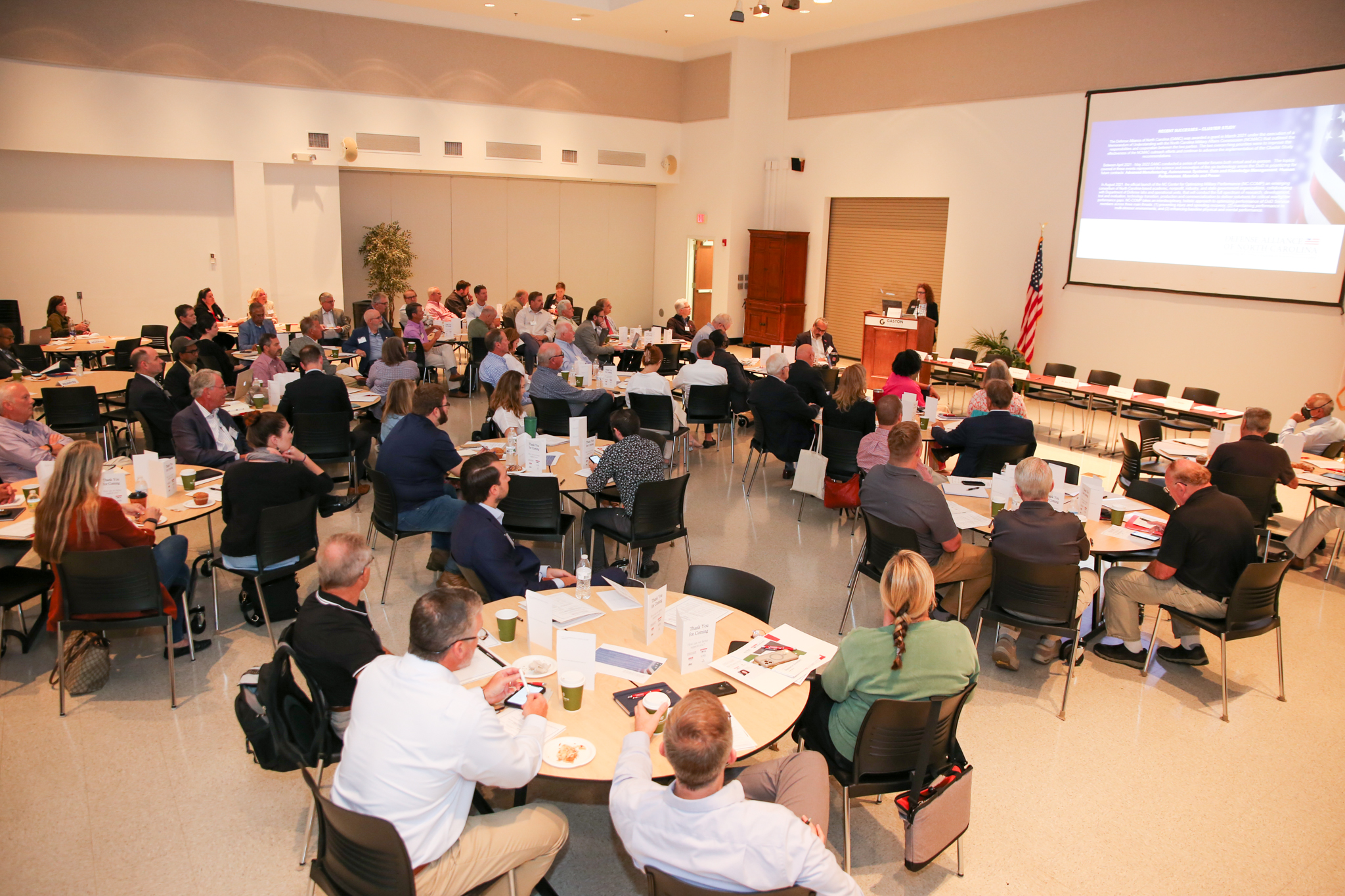
The Defense Alliance of North Carolina is trailblazing the future of innovation with novel technology clusters. Within the state, they are creating a space to foster multiple business and tech ecosystems for national security and defense purposes. DANC came about in August of 2019 when the North Carolina Military Foundation and the North Carolina Defense Business Association merged. The NCMF was an economic developmental association with strong military ties due to members who were mostly retired flag officers, according to DANC Science & Technology Chair Phil Williams.
On the other hand, NCDBA was an organization for networking and promoting defense related ventures within the Department of Defense, including contracts, in North Carolina.
“A lot of the DOD contracts for technology was going to Massachusetts, California, and Texas,” Williams said. “We were not winning the bulk of the technology business in North Carolina when we had Duke University and the whole (University of North Carolina) system; we had all the ingredients.”
What DANC does is create multiple environments, and position North Carolina as leaders in novel technology aggregates for national security and defense. Some examples of these avenues are communication technology, energy generation, cyber resilience, and more.
According to DANC Science & Technology Co-Chair Brandon Conover, North Carolina has a history of textile development and manufacturing, therefore, the state has full potential to be part of the future of advanced materials and textiles as they are working on facilitating the return of textile production back to the state.
“It is our goal to come up with the right people and the right technologies at the right time — with funding — to make sure North Carolina is the leader,” Conover said. “The battlefield is changing, the face of international politics is changing, and what we are going to be asking our uniformed services to do in the next 10 to 20 years is going to look very different than it looks today.”
In one of DANC’s collaborative projects, they are conducting a study with the Military Business Foundation to identify defense asset technologies within the state. One of those areas is advance materials and how North Carolina can innovate the ecosystem for smart textiles research, development, and production, in support of warfighter performance and novel commercial applications.
“If you think about the intersections of the clusters of these technologies, that’s where we work,” Williams said. “We bring the basic scientists together with the user or soldier operator to understand the problem. Then we build collaborative teams.” DANC acts as a facilitator for interested, potential, and capable agencies to meet. The goal is to team up for collaboration in a trusted environment.
“Anybody anywhere can find someone on the internet and call them up and say, ‘Hey, do you want to work together?’” Conover said. “Without some degree of trust and knowledge of what each other’s business goals are going to be, that’s an uphill battle. The Science & Technology community within DANC is really there to foster the conversation; create introductions.”
Normally, a large business would have the means within its organization to harness resources on business development, technology creators and engineers. However, these resources are not readily available to smaller companies.
“The DANC community is really there as an amalgamation of all of these positions a large organization would normally have working together to be more than the sum of the parts,” Conover said. “The (DANC) guides those opportunities to the right businesses and to the right users.”
One of the advantages of DANC acting as a melting pot for a spectrum of resources in North Carolina, is that larger companies aren’t necessarily setting aside the time and resources to go after a new industry area because that’s a risk, according to Conover.
“By pulling all of our resources, pulling all of our knowledge from basic science all the way to business and law, we are creating that opportunity to achieve, win and develop something you would normally have a hard time doing by yourself,” he said.
The core mission of DANC is creating an agile, free-forming and trusted environment for creative minds and innovation to flourish.
“We need to have a trusted environment where individuals feel like they can share an idea without somebody stealing it,” Williams said. “Allowing them the freedom to pair or team up however they want, freeform things …” “...We brought all of these people together.”
One of the key things DANC is currently working on, is the development of advanced textiles. They are working on bringing textile manufacturing, which is currently outsourced, back to North Carolina.
Acting as an intersection between research and development, DANC is also working on closing a technology gap and facilitating the innovation of smart fibers that can transmit and conduct information for military purposes.
“The smart textiles is an excellent example of bringing in many facets of science, technology and engineering to create a new technology almost anywhere,” Conover said. “And North Carolina is in a great position to do that.” Williams, who has experience in manufacturing textiles, envisions North Carolina producing highly intelligent textiles and smart apparel.
“Like when your blouse under fire may harden and become armor,” he said. “There are things you can’t even imagine, but that’s where we are working at: the gap-closing technology for our warfighters.”
The organization also works closely with public universities, Historically Black Colleges and Universities and private schools within the state. These collaborations often spin out prototypes, proofs of concept, and sometimes even political devices for less cost comparatively.
“There are a lot of opportunities for small businesses to partner with engineering schools and colleges to develop their ideas — even within a simulated field setting — and being able to communicate with men and women in the military about where those capabilities can go,” Conover said. “The sky is the limit on the topic.”
DANC will also be meeting with North Carolinian companies that have the potential to win funding from the CHIPS and Science Act. According to WhiteHouse.gov, the act will boost American semiconductor research, development, and production. This means semiconductors will be made on American soil using American supply chains, according to Conover.
“How does a small business compete with large companies to bring that kind of funding to the local level?” Conover said. “Those spaces we are trying to fill.”

Mike BerkMike Berk is still getting settled into his new office and home, but his enthusiasm for his new role as CEO of Longleaf Pine REALTORS® is already in full swing. Just a few weeks into the job, the association management veteran sat down with